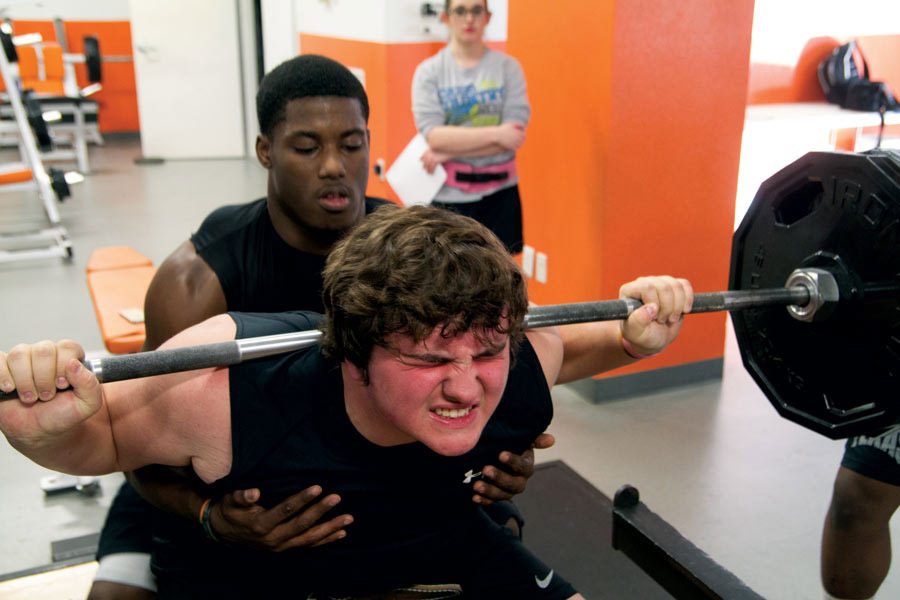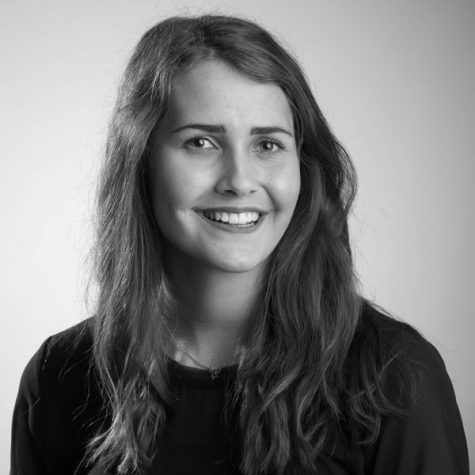Powerlifting season begins
January 11, 2017
The artificial smell of rubber mingles with the sharp stench of sweat. The room resounds with the clang of metal as the weightlifters struggle against the machines, trying to lift just a few more pounds than last time. Just a few more pounds than last time, and practice is a success. Just a few more pounds every time, and the season is a success.
The powerlifting team began training after Christmas break. The first meet will be held Thursday, Jan. 12 at Texas High.
“Weight lifting is fun. The kids like it, and it’s not necessarily time consuming,” Coach Jeremy Harrell said. “The workouts after school aren’t too long, about 30 minutes. We’re not trying to lift a whole lot of light weight, we’re trying to lift a whole bunch of heavy weight for very few reps.”
Harrell coaches football in the fall, and most of the powerlifters are football players. Even though it’s not necessarily a football related sport, Harrell uses it as an extension of the football off-season program.
“It’s mainly football guys, but every now and then I’ll try to find somebody who’s not in football if I need somebody in the lower weight classes,” Harrell said. “It’s hard for me to let somebody in who’s not in athletics because it’s hard for me to keep up with them and with their grades.
Not everybody can do it because only 11 people can be on the team. The good thing about weights is that there’s not much of a discrepancy there–you either lift it or you don’t. So there’s not much negotiating.”
The competitors are divided into 11 different weight classes, and only compete with others in their weight classes.
“It’s divided into weight classes so it’s not like a guy who weighs 300 pounds and benches 300 pounds is going up against a guy who weighs 114 pounds and benches 300,” Harrell said. “Realistically it’s an 11 person team, and as a powerlifting coach you’d want one person in each weight class, but that doesn’t always happen.”
Last year, 11 competitors qualified for the regional meet, and four advanced to the state meet in Abilene, Texas. This year, the team hopes to send even more, and place higher as a team.
“This season we plan to win as a team, not individuals,” junior John Magbanua said. “We got second most times as a team, but this year we want to win first. We always look after each other, we always cheer on each other even if the people at the meet tell us to be quiet. We’re always loud for our teammates.”
The team’s success depends on individual performance; at each meet, the team’s points are determined by the amount of weight each person can lift.
“You get three tries from three different lifts: bench, squat and deadlift,” Magbanua said. “You get three tries in each, and if you miss it, you can’t go down in weight, you have to stay the same or go up. You go to your individual weight class, and count the best lift from each set. Say you lifted 300 pounds, that would be 300 points.”
Because team performance is based on individuals, there are several ways to determine how successful the team is.
“You can judge success by a number of things,” Harrell said. “You can judge it by how many people you qualify for regionals. If you have 11 available spots and you get somewhere between eight and nine, you’ve done really really well. If you get somewhere near half, that’s pretty good. Sometimes there are strong people, sometimes there aren’t strong people, so it fluctuates. It’s really just on an individual basis. If you start out bench pressing 200 and you end the season benching 300 pounds, then I think it’s successful.”















